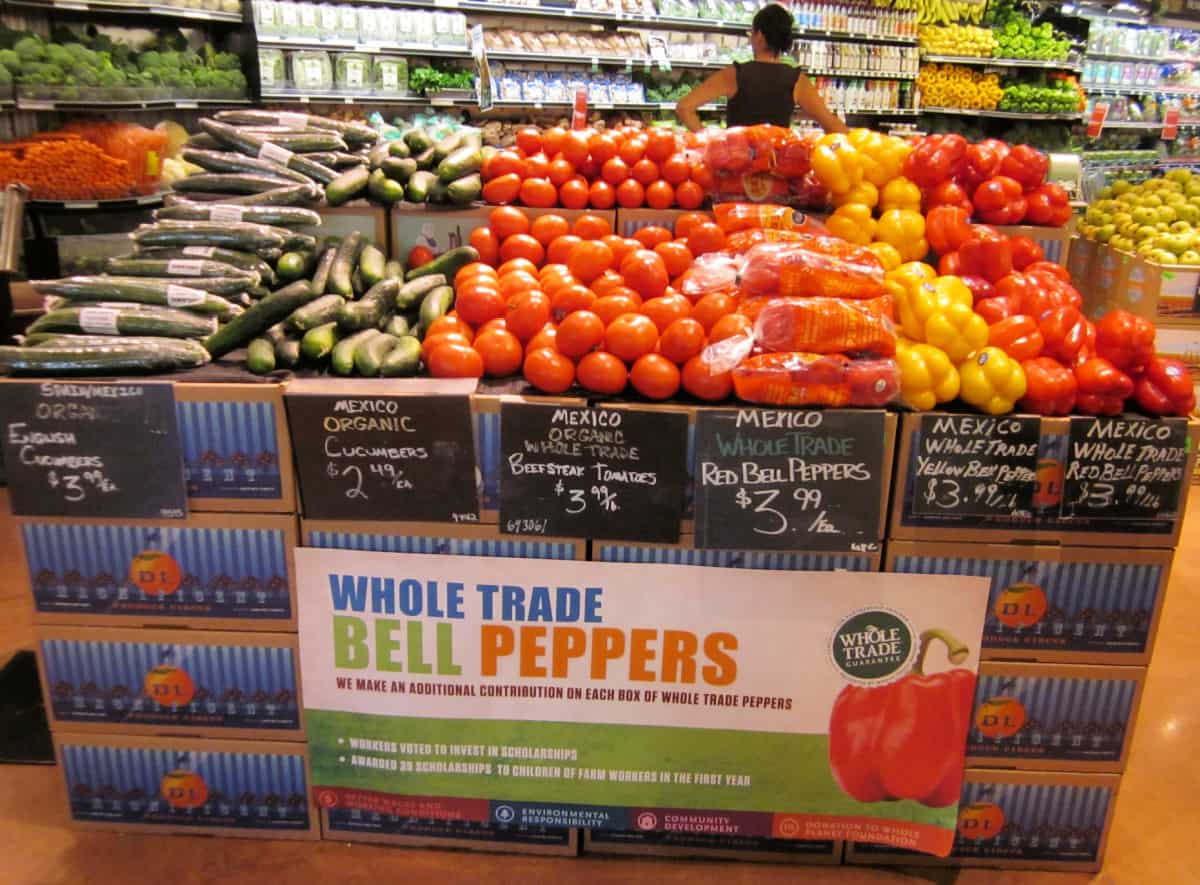
[ad_1]
Like most consumers, I had heard of responsible shopping and labels like Fair Trade. They had some meaning to me but until recently, I didn’t have the whole picture. With environmental issues there is just so much to be educated on when it come to the supply chain, social impact, and sustainable products. In this blog post, I will go into depth on what responsible shopping means and how to shop responsibly. I will share my personal journey with you so you can see how I learned first hand about environmental sustainability and responsible consumption.

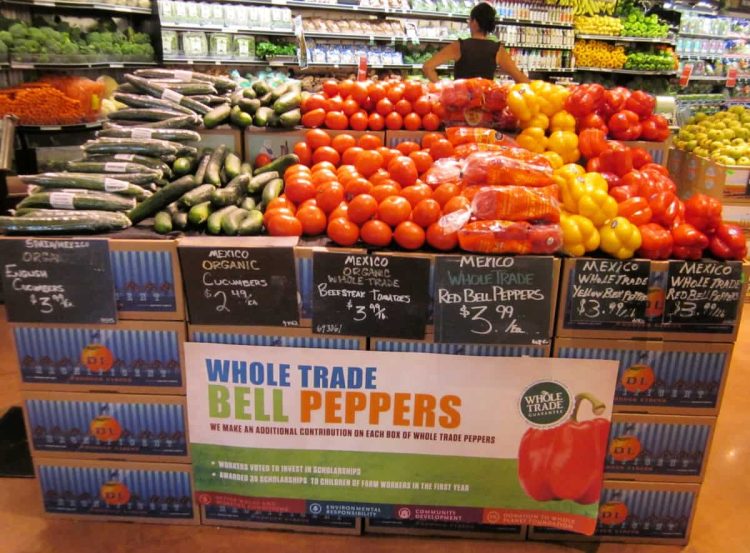
What is the meaning of buying responsibly?
Responsible shopping has to do with considering the effects of your purchases. You can start by asking yourself a few questions. Are your purchases good for your health and the health of the planet? Is the product being produced through sustainable methods? In other words, is the company using practices that protect the environment and employees to make the products? The meaning of responsible shopping is that you are realizing that your purchases have an effect not just on you but also on the environment and on the workers. A responsible consumer does not make purchases that have a negative environmental impact or that abuse human rights.
Now that you get the shop responsibly meaning, the next step is figuring out how you can be a responsible shopper. In other words, how do know if you your purchases are being brought to the market through responsible ways. Label reading helps. Below are a few things to look for.


How To Shop Responsibly- Look For Certification
There are several non profit organizations that offer certification programs for farmers. Certification programs come with strict guidelines. These ensure the farm is complying to high standards for the conserving the environment, worker conditions and wages, community outreach, and the quality of the produce itself. Some of these certifiers are Fair Trade USA, The Rainforest Alliance, Fair for Life, and Fairtrade International. Each certifier has a slightly different focus or way of achieving their goals. However, all of these programs are working to bring responsibly produced goods to a global marketplace and help consumers locate the responsible product choices with their certification labels. At Whole Foods Market, they simplify this for the consumer by using the term “Whole Trade“. This signifies that the product has been certified (by one of the third party certifiers mentioned above) thus making it easy for responsible shoppers to “shop with conscience”.
Oeko tex is another certification program to look for that serves as a powerful tool. It speaks to the sustainable sourcing throughout the new garments, textile and leather supply chains. From clothing to bed sheets, they can help you find sustainable fabric options.
These certification labels help responsible shoppers find new brands of eco-friendly products that demonstrate corporate social responsibility and reduced ecological footprint. They make it easy to be conscious consumers. Otherwise, it can be hard to know about the practices of small businesses and big brands. You may find yourself guessing and hoping if you don’t use certification programs. In this case sticking to organic products, renewable energy, and thrift stores can help you be an ethical consumer.
Rainforest Alliance Certification
My in-depth education on responsible shopping began with a 2013 trip to Costa Rica to visit farms. I am a biology major and my passion is for nature. Getting to see sustainable farming practices at work was a real treat.
I was part of a press trip with the Rainforest Alliance and we visit several certified farms- a flower farm, a passionfruit farm, a banana farm, and an orange and mango farm. I heard many of the small property owners and farmers say they felt overwhelmed at the start of certification. However, they all appreciated the in depth guidance the certification process provides. They all seemed truly proud to be a part of a sustainable farm.
I was moved by the words of P&F Flower Farm Production Manager, Juan Pablo Villalobos. He said, “In the start we became certified to be a leader at the market, but we find less worker accidents. We find that workers are protected from pesticides. Furthermore, we find we are saving money by making our own organic nutrients for the soil, we find less soil disease. We are making environmental and social improvements and it is not just for the market any more. It has brought the employees and their families forward and we can not go back. We can not accept less.”
I saw that the Rainforest Alliance was spreading knowledge to people on how they could farm in sustainable ways that really worked for the environment, for the bottom line, and for improving the daily lives of the workers and their communities. Witnessing The Rainforest Alliance work made me truly feel inspired and hopeful.
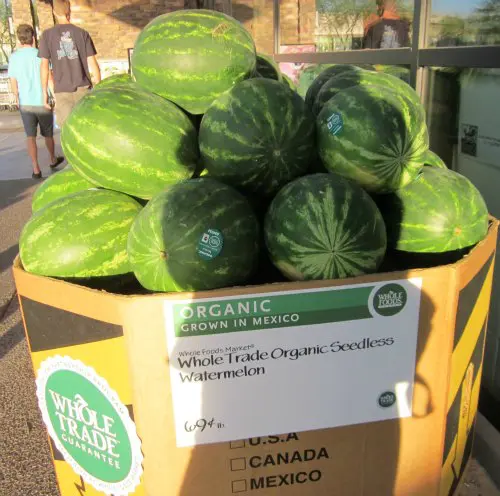

Whole Trade Guarantee
Needless to say, I was thrilled when I got the chance to expand my learning on responsible shopping and go with Whole Foods to visit Fair Trade farms in Mexico. What was unique about this trip is that it was a press trip combined with a reward for members of the Boise, Idaho, Whole Foods Market team. Their store had won a contest for the most success promoting the Whole Trade Peppers. There were also members of Whole Foods buyers and distribution team. It was great to get a chance to talk to all of them on this brief but action packed trip.
What really caught my fancy was just how genuinely excited everyone is about this Whole Trade Pepper project. The thing is about doing good is that it makes you feel good, and it is catching! You could tell they loved being involved as a piece of the puzzle that makes this world a better place for everyone.
It was great to see the whole cycle for the Whole Trade peppers and watermelons. From the Whole Foods Market and the presentation and education efforts of the Whole Foods team to the peppers and watermelons on the vines in the fields in Mexico. It was eye opening meeting with the farm workers who grow and harvest the crops. It was so interesting hearing from them how Whole Trade is changing their lives. You can bet I was inspired and I will be choosing Whole Trade products whenever I can!
Fair Trade Certified Produce From Grupo Alta:
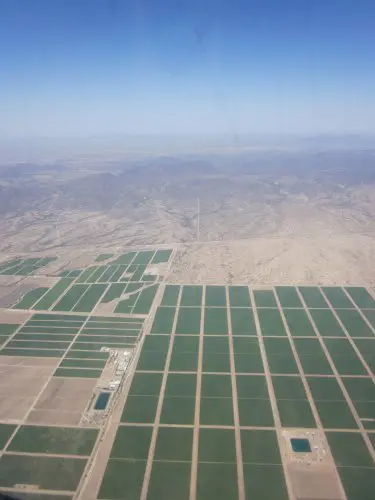
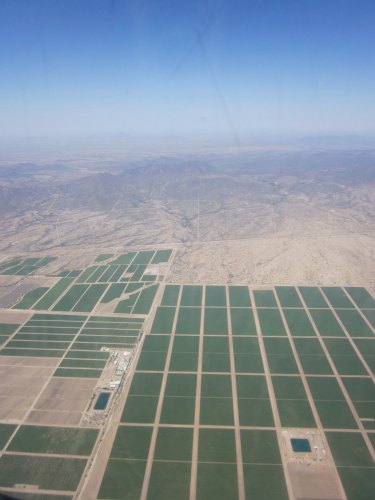
We spent one day with Grupo Alta touring their farms, a packing plant, and witnessing a meeting of the Fair Trade workers elected officials. It was a long day filled with an amazing peek into their farming operations and into the lives of thefarmers.
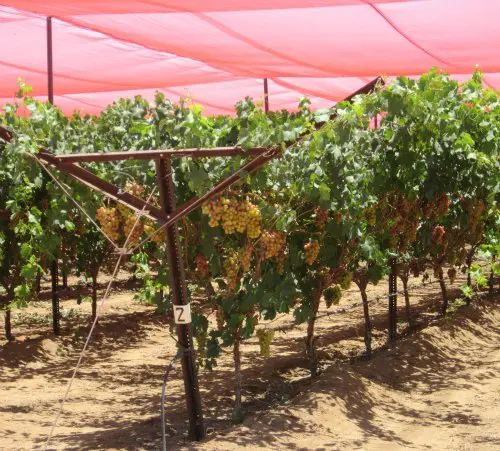
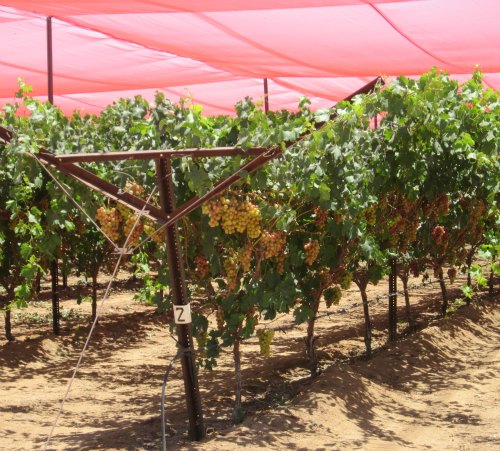
Grupo Alta Fair Trade Certified Grapes:
We had the pleasure of looking at the table grapes in the fields- just beautiful! Carlos, one of three bothers, in the family business showed us many varieties of grapes that they are growing. He gave us a little education on table grapes.
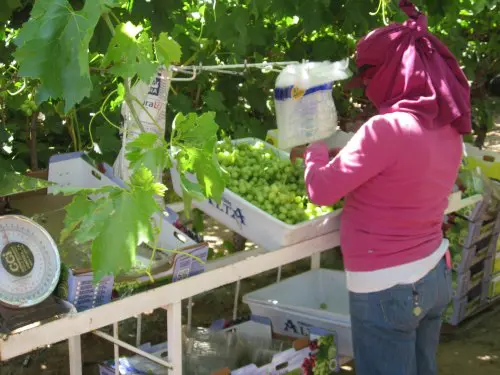

It turns out that the consumers drive some strange trends in the table grape business! Consumers want green grapes, when in fact “green” grapes turn yellow when they are most ripe and sweet. I am embarrassed to say that I did not know that!


Consumers all want their red grapes to be “red”. So much so that many conventional farming methods use a chemical to achieve that deep red. Wow, a little education goes a long way! Grupo Alta is growing many varieties right now to test the most flavorful ones for their growing conditions. They are also experimenting with different shading options to help achieve the color desired by consumers naturally.
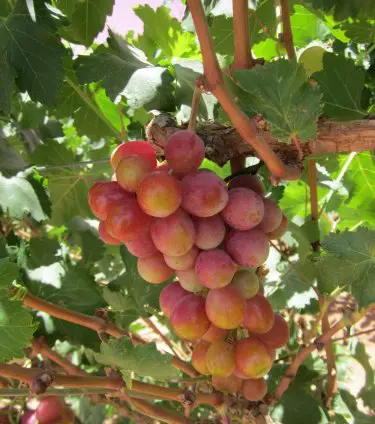
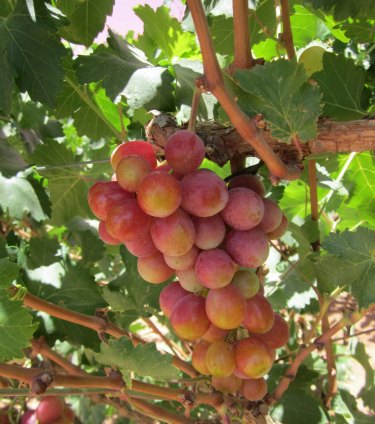
Grupo Alta Fair Trade Greenhouses:
Next up, was a visit to Grupo Alta greenhouses. We saw them growing Fair Trade tomatoes, Fair Trade bell peppers, and Fair Trade cucumbers. The Whole Trade cucumbers from Grupo Alta are the second Fair Trade vegetable to be sold in the U.S. I never knew tomatoes could grow so tall!
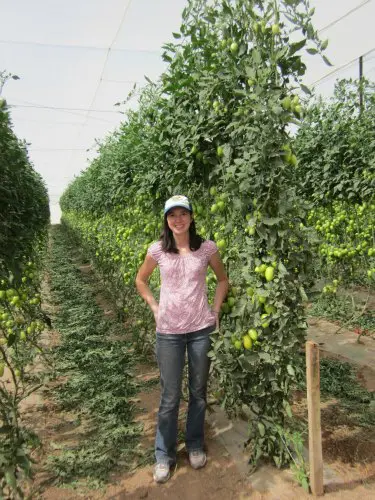
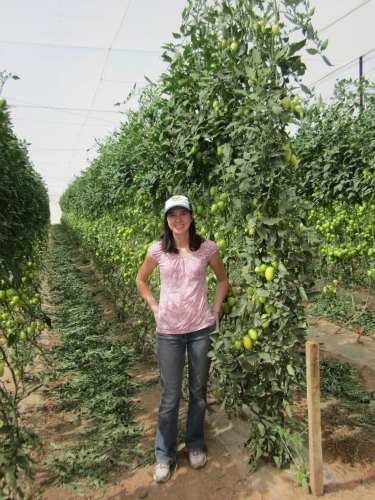
Or that greenhouses could be so big!
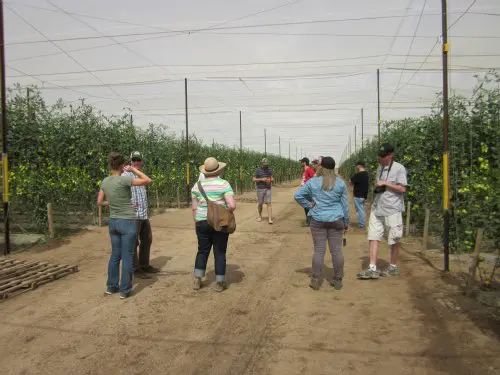
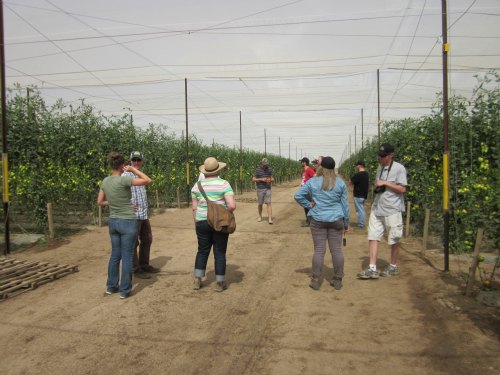
Grupo Alta Fair Trade Watermelons:
On our way to see the watermelons growing in the fields, we passed an avenue of saguaros cactus. Carlos explained had been transplanted there when they cleared the area for the farm. We also saw lots of beehives which they rent to help fertilize the watermelons.
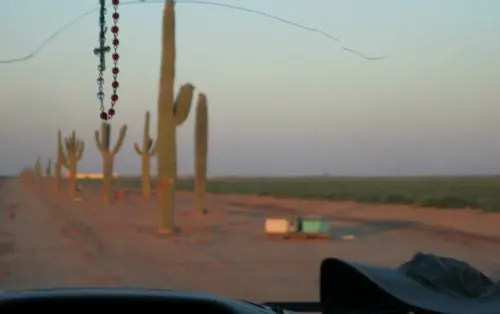

I loved seeing the watermelons growing in the fields. It was fun to see the farmers taking a look at their crop as they discussed size and sweetness of their fair trade watermelons.
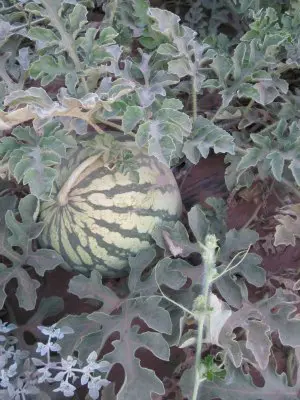
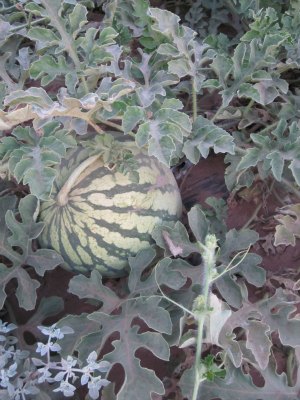
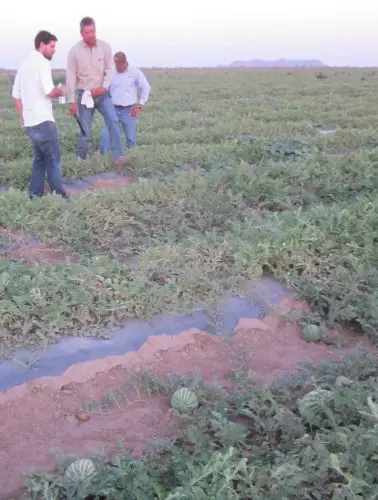

Next we visited the watermelon packing plant. It is covered to protect from the sun but the sides are open for fresh air and sunlight. We saw the workers packing, and stickering, and loading. We also interviewed a farm worker.
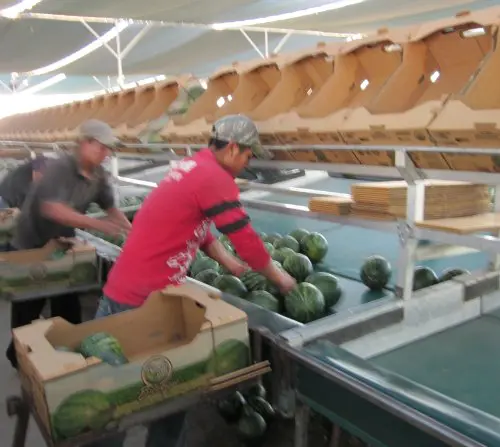
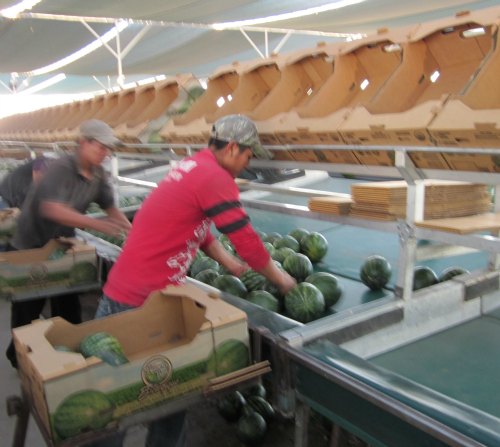
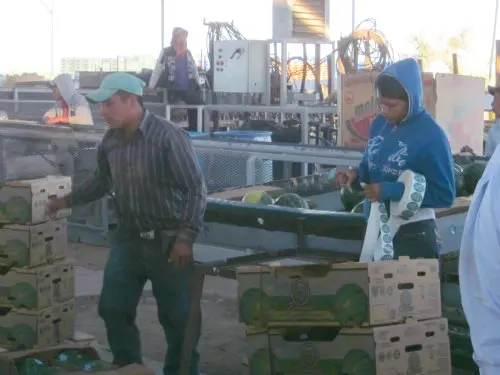
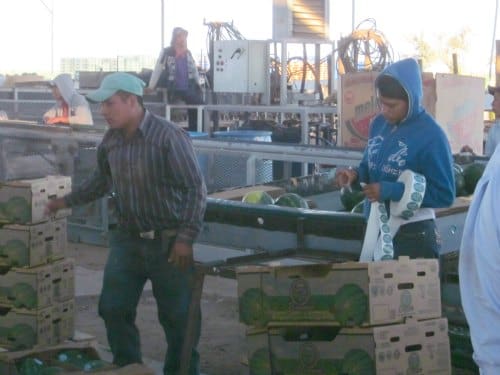
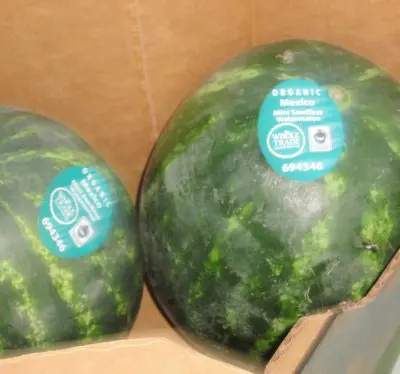
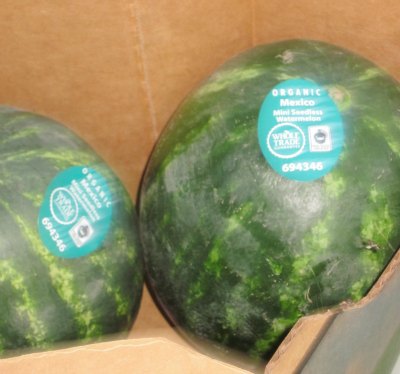
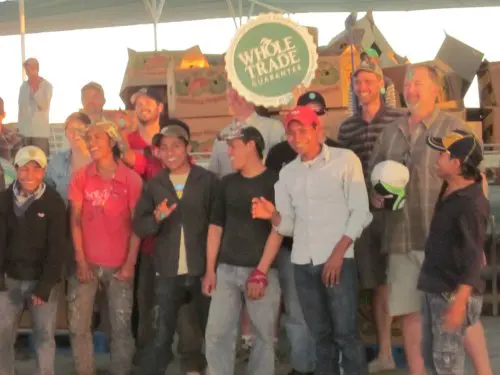
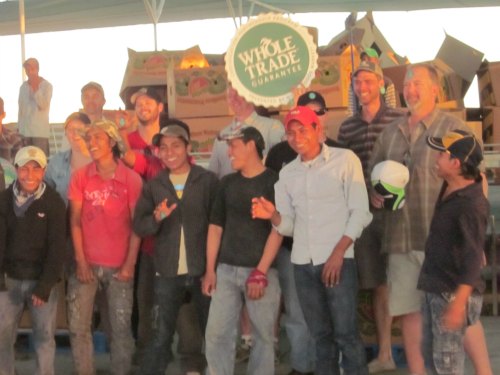
Grupo Alta Interview About Fair Trade Farming Methods:
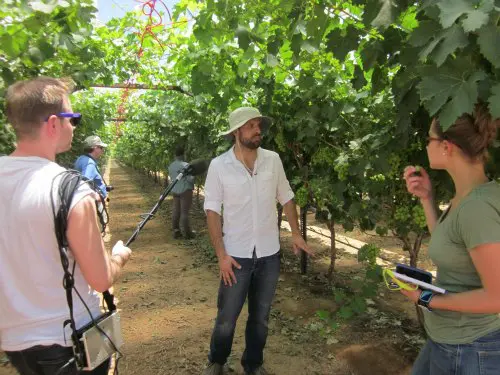
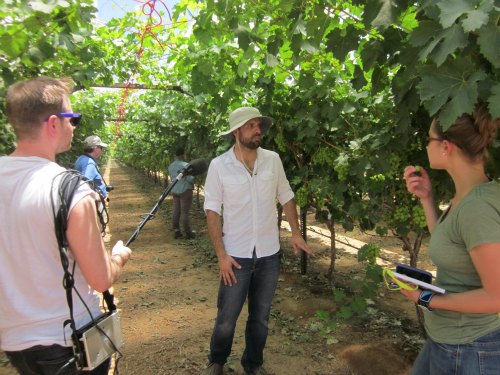
We were able to interview Carlos Bon. He is a sales executive and a member of the family that owns Groupo Alta which was started by his father and uncle. When I asked Carlos what made them decide to seek Fair Trade certification, he said that his father was a “nature freak”. They believe that, “In order to grow a healthier fruit and plant, we need to have healthier soil.” Fair Trade standards help them achieve healthier soil and grow in a sustainable way. Carlos Bon said that there are economic benefits to becoming Fair Trade as well. They have achieved “higher efficiency, better quality, and higher yield”. He also said that Grupo Alta has always tried to provide good benefits to their workers. However, Fair Trade standards made this easier to measure, easier to accomplish, and provided the workers with more input into their benefits.
Organo Mixto Grupo Alta (The Elected Farm Worker Fair Trade Group):
Fair Trade requires that the workers elect their own governing body. These individuals represent the group in decisions on how to use the Fair Trade money for community building. With money from their first year of Fair Trade proceeds, the group had awarded 32 scholarships to children of farm workers that met merit requirements. They are awarding 47 scholarships for children on their second round.
I was honored to participate in the awarding of a scholarship to an adorable 12 year old girl. (The one with the braid in the photo below.) I forgot to get a photo but the girl’s family took one of she and I together! Here is a photo of group of the students who received scholarships that night- it warms my heart. One boy who got a scholarship said, “Thank you for this opportunity so that I can be somebody.” It almost made me cry because you feel so happy to give them that opportunity. The group was also making plans to improve housing.
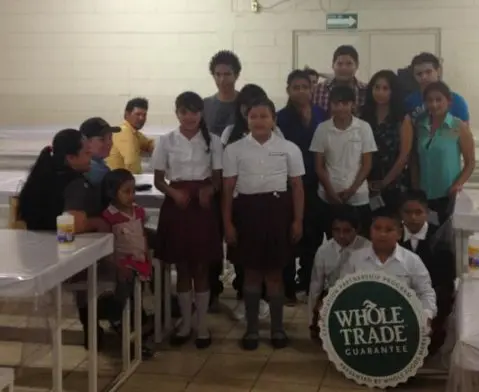

The visit to Grupo Alta was really a wonderful experience. I thank them all for being so welcoming and Whole Foods for allowing me to go on their trip and have a peek into Fair Trade produce from farm to store.
When You Choose To Buy Whole Trade® You Support:
- Fair prices, better wages, and better working conditions.
- Environmental responsibility that encourages biodiversity and healthy soils.
- Community development projects like scholarships and health clinics.
- 1% donation to Whole Planet Foundation® to help fund poverty alleviation through microcredit in the US and abroad.
How To Be A Responsible Shopper Conclusion
Being a responsible shopper involves making mindful choices that prioritize sustainability, ethical practices, and long-term value. This means researching the brands and products you buy, considering how they’re made, and supporting companies that follow fair labor and environmentally friendly practices. Opt for quality over quantity to reduce waste and ensure that purchases last longer. Avoid impulse buying by considering if you truly need an item and its impact on the planet and your budget. Additionally, try to support local businesses and choose products with minimal packaging to reduce your environmental footprint.
You have to shop anyway. Now you know how your responsible shopping choice can make someone’s life better and help protect the environment. Together, our simple shopping habits can make a big change and that is exciting!
Related Posts:
12 Fair Trade Chocolate Companies That Make Delicious Treats
Six Fair Trade Coffee Companies You Have Got To Try!
How to Raise Responsible Kids
[ad_2]